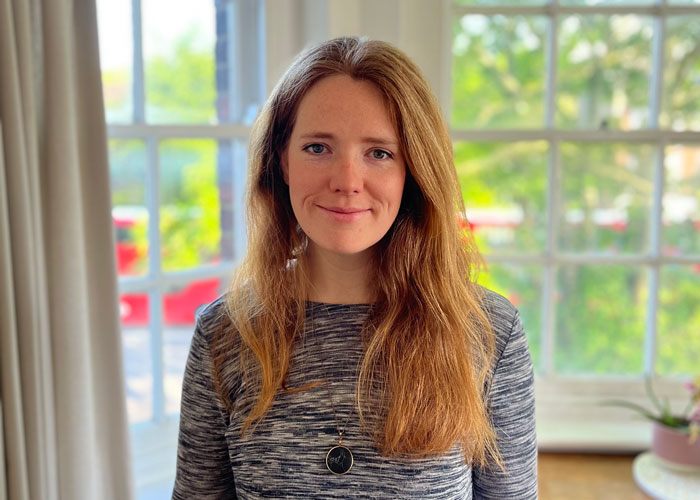Sustainable Innovation Interview Series: Lucy Bagshaw, tp bennett
Understandably sustainability is an important topic of conversation between Commercial Interior Designers and Suppliers. This series of interviews aims to share knowledge of new materials but goes on to challenge how circularity can succeed in the commercial sector and what that production model may look like. We also focus on action by asking our interviewees to share examples of how they’ve delivered sustainably innovative projects in order for the sector as a whole to learn and grow.
We sat down with our Sustainability Ambassador Lucy Bagshaw to gather a clear insight into sustainable innovation from the viewpoint of a leading commercial interior designer.
Enjoy the full Sustainable Innovation Interview Series here

Please could you introduce yourself and your role?
I’m Lucy, a project director at tp bennett. I split my time across the Interior Design department, where I mostly work on commercial office fit out, and the sustainability team, in which I help develop our own strategy at tp bennett, as well as supporting on projects; holding workshops, assisting with certifications and developing bespoke sustainability strategies for projects.
What innovation have you found in materials suitable for commercial interiors?
There’s a lot of really exciting material development going on out there, with microalgae, seaweed, mycelium and renewable fibres such as hemp being used more and more. But a lot are still in their infancy and aren’t yet meeting the stringent fire, acoustic and performance requirements that we require. I’m most excited by the possibility of hemp to be honest; although it’s been around for a while it seems to have the potential to provide a lot of solutions whilst being a rapidly renewable resource which can be harvested with minimal impact.
Can circularity truly be integrated within a commercial interior project?
Eventually I think it will be possible but we have to remember that circularity can’t be achieved by just one party in a commercial interior project – it relies on pretty much everyone involved, from the FM team to the contractor, to the architect, to the manufacturers and logistics companies to make it possible. It’s a big and really complex puzzle and at the moment I don’t think it’s been fully ‘cracked’. Materials Passporting or asset tagging is something which has huge potential and advances are being made with software for it, but it doesn’t seem foolproof at the moment. The steel industry are probably the furthest ahead at the manufacturing end, but other industries are still catching up. However there’s lots we can do in the meantime, whilst continuing to push all parties towards circularity which can make a huge difference – designing for demountability, specifying recyclable materials and reusing/remanufacturing wherever possible.
How have you addressed innovation within the installation, or demolition stage, of your projects?
We’ve recently come across a few issues on some of our projects which compromise the sustainability credentials of the project; CAT A ceilings are coming out of buildings that we designed and carpet tiles were specified and signed off where the backing was coming from the US. Whilst initially terrifying, it’s opened up conversations with suppliers which might never have happened; we’re speaking to the supplier of the ceiling tiles about taking them back for reuse elsewhere (which they currently aren’t doing, despite CAT A ceilings being a considerable part of their sales) and to the carpet manufacturer about redeveloping products to be possible with a different backing made in the UK.
What do you need from suppliers in order to deliver sustainable projects which achieve high levels of accreditation?
Transparency, transparency, transparency. Accreditations are a useful mechanism to push projects to consider various aspects but the more transparent suppliers are with us, the more we can push them to do better. By asking them questions and understanding more about the products we are specifying, we can ensure that we are selecting responsibly and appropriately, but we can also push them to ask questions of themselves and their processes/materials and ultimately improve. This way, we’re going beyond accreditations and making sure that sustainability is truly embedded in the project.
What is the next step in our sustainable conversation and who is it between?
We all need to be linking up more; conversations need to happen more frequently between all parties and not just those directly around us designers. I think the importance of knowledge sharing and transparency is critical; sustainability shouldn’t be a unique selling point for practices, consultancies, contractors or manufacturers – it should be something we encourage other members of our industries in together. As one company, we can only make so much of a difference…but together we might just get there.




